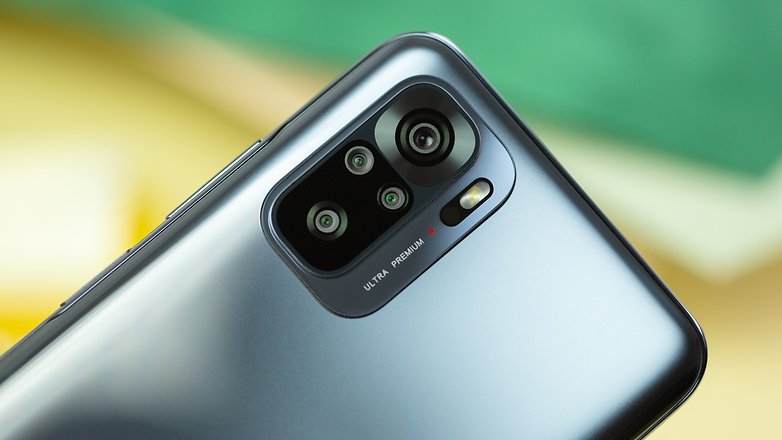
[ad_1]
Early in 2022, Xiaomi updated its mid-range fleet and unveiled the Redmi Note 11 lineup. New features of the base model Redmi Note 11 include the SoC and the improved main camera as well as MIUI, although the latter is unfortunately not yet based on Android 12. Last year, the base model was available in LTE and 5G versions. However, the two devices differ by much more than just the 5G modem, so you can find both variants next to the Xiaomi Redmi Note 11 in our overview table:
| 2021 model without 5G | 2021 model with 5G | 2022 model | |
|---|---|---|---|
| Device | |||
| Image |  |
 |
 |
| Display | 6.43 inches, AMOLED, FullHD+, 60 Hz | 6.5 inch, IPS, FullHD+, 90 Hz | 6.43″ AMOLED display with FHD+, 90 Hz |
| Dimensions / Weight | 160.5 x 74.5 x 8.3 mm | 178.8 grams | 161.81 x 75.34 x 8.92 mm | 190 grams | 159.87 x 73.87 x 9.09 mm | 179 grams |
| IP certification | IP53 | – | IP53 |
| Performance | Qualcomm Snapdragon 678, GPU Adreno 612 | MediaTek Dimensity 700, ARM Mali-G57 MC2 | Qualcomm Snapdragon 680, GPU Adreno 610 |
| Memory | 4 / 6 GB 64 /128 GB memory Expandable via microSD |
4 GB 64 / 128 GB memory expandable via microSD |
4 / 6 GB 64 / 128 GB memory expandable via microSD |
| Connectivity | LTE, Bluetooth 5.0, Wi-Fi 5, jack connector | 5G, Bluetooth 5.1, NFC, GPS, IR blaster, jack connector | LTE, Bluetooth 5.0, NFC, IR blaster, jack connector |
| Cameras | Main: 48 MP, f/1.79, 1/2″ sensor Ultra-wide: 8 MP, f/2.2, 118° FOV Macro: 2 MP, f/2.4 Depth: 2 MP, f/2.4 Selfie: 13 MP, f/2.45 |
Main: 48 MP, f/1.79, 1/2″ sensor Macro: 2 MP, f/2.4 Depth: 2 MP, f/2.4 Selfie: 8 MP, f/2.0 |
Main: 50 MP | f/1.8 Ultra-wide: 8 MP | f/2.2 Macro: 2MP | f/2.4 Depth: 2MP | f/2.4 Selfie: 13 MP / f/2.4 |
| Battery | 5,000 mAh | 33 Watt Quick-Charging | 5,000 mAh | 18 Watt | 5,000 mAh | 33 Watt Quick-Charging |
| Software | Android 11 with MIUI 12 | Android 11 with MIUI 12 | Android 11 with MIUI 13 |
| Price | From $245 | From $345 | From $208 |
| Pros | Full HD+ AMOLED display Battery life and quick charging Splash-proof Infrared interface |
– | – |
| Cons | No NFC Outdated processor Cameras are not particularly versatile |
– | – |
| Rating | Read review |
|
|
| Check offer* |
|
|
None available yet |
Since we have only been able to review the Redmi Note 10 previously, we will compare the smartphones’ specifications in this review. As soon as the Redmi Note 11 arrives at the editorial office, we will write a hands-on impression and update this comparison article accordingly.
Jump to:
Redmi Note 11 vs. Note 10: Display and casing
A look at the specifications tell us that nothing has changed in terms of resolution as well as the display technology: It still carries a 6.43-inch AMOLED panel with Full HD+ resolution. Turning the device on, you will notice that the refresh rate has improved: in 2021, it was only 60 Hertz, while the Note 11 offers a 90 Hertz refresh rate.

By the way, the Redmi Note 10 5G stands out from the crowd here. The additional “5G” suffix suggests that the model is the same as the base model apart for the modem, but that is not the case. We can see that directly in the display: The slightly larger 6.5-inch panel relies on LCD technology, but also comes with a 90 Hertz refresh rate
Xiaomi did not make any real leaps in terms of design. The Redmi Note 11 is a bit more compact, but it is also a bit thicker. You will probably not even notice the different dimensions when the two devices are not placed directly next to each other. Both smartphones are also IP53 certified. The Note 10 5G lacks this certification.
Redmi Note 11 vs. Note 10: Performance and connectivity
Snapdragon 680 for this generation and Snapdragon 678 last year – that sounds like an update, but we will have to look very closely here in the comparison. It is not a step forward in terms of performance. On the contrary, even the Snapdragon 678 should be slightly ahead in terms of performance. This is also due to the fact that the Adreno 612 GPU is responsible for the graphics, whereas the Snapdragon 680 has to make do with Adreno 610.
So why this SoC? We will, at the very least, benefit from the fact that it supports the 90 Hertz refresh rate. Moreover, the Snapdragon 680 chipset is the more energy-efficient of the two. I do not really expect huge differences in performance here, but we will clarify that as soon as our review unit is here. The Note 10 5G is also out of the ordinary here: It was equipped with the MediaTek Dimensity 700 from last year.
In terms of connectivity, the Note 10 and Note 11 are (almost) identical: Both only use the LTE network and Bluetooth is still offered in version 5.0. Fortunately, an NFC chip is now installed. This should please those who like to pay with their smartphone.
The Note 10 5G also differs from the other two in terms of connectivity: Besides Bluetooth 5.1, there is, surprise, surprise, a 5G modem here. There is room for a 3.5 mm audio jack across all three devices.
Redmi Note 11 vs. Note 10: Cameras
The camera shows a slight improvement, at least on paper, since the primary camera now has a 50-megapixel count instead of 48. Behind that, everything remains the same: Ultra-wide at 8 MP, as well as macro and depth sensor at 2 MP each. In the front, 13 MP shooter is installed for selfies. Since the quality of a camera cannot be assessed by looking at the number of megapixels, a test is necessary here as well.

Incidentally, the Note 10 5G offers largely an identical camera system as the Note 10, but does without the ultra-wide-angle sensor and only offers an 8 MP shooter in front.
Redmi Note 11 vs. Note 10: Software
Well, we should actually expect a step from Android 11 to Android 12 here. Unfortunately, this is not the case. The Redmi Note 11 already ships with MIUI 13, but it is still based on Android 11. Just like MIUI 12, which we find on both smartphones from 2021. I had hoped that Xiaomi would have more to offer here.
The comparison between the Redmi Note 11 Pro and Redmi Note 10 Pro shows that the same problem exists there as well. So it’s not just a base model dilemma.
Redmi Note 11 vs. Note 10: Battery and Quick Charging
The trend that already runs through the entire article is confirmed here as well: As in the Redmi Note 10, Xiaomi relies on a thick 5,000 mAh battery in the new model and lets us charge it at 33 watts. We know that Xiaomi has reached completely different spheres of fast charging its top models: Even the mid-range Redmi Note 11 Pro (both LTE and 5G variants) charge at speeds of 67 watts. The Xiaomi 12 Pro already shines with 120 watts and reverse charging capability.
Redmi Note 11 vs. Note 10: Prices and availability
Availability? Well, the new Redmi Note 11 models were announced on January 26. In the meantime, it is now February and there is still no sign of the devices in Europe – let us not even talk about the US. We do not even know the prices here yet. The US equivalent price of $179 has been officially communicated so far by selected channels, while the Redmi Note 10 was available for €199 in selected parts of Europe. Presumably, we cannot expect a big surprise compared to last year. The Note 10 5G, for instances, carried a €229 price tag in the Old Continent.
Conclusion: Do you have to upgrade from the Xiaomi Redmi Note 10?
As always, when we can only compare technical data, the conclusion is not final. However, it is clear that the update is relatively manageable on paper. We will leave the Note 10 5G aside, which is aimed at a somewhat different market compared to the other two models.
You will not really feel a difference in terms of performance or battery life when you opt for the new Redmi Note 11. However, the identically sized, but now 90 Hertz refresh rate in the display is definitely “nice to have”. How much better the camera performs and whether Android 11 looks better with a newer MIUI version remains to be seen. Neither has 5G, but perhaps NFC availability in the Note 11 could influence your purchase decision.
Users who own the Redmi Note 10 would most probably skip the Note 11 upgrade. The market for smartphones under $200 is also a free-for-all with many competitors, while MWC is just around the corner. The Redmi Note 11 is not yet available anyway. Therefore, I can only recommend you to keep your feet grounded and check out the competition, especially after the MWC. It is only then that you decide whether it should be the Note 11, one of the other zillion Xiaomi mid-range models, or the competition.
What do you say when you only compare the bare numbers: Did Xiaomi update its product range accordingly, or did you expect more?
[ad_2]






